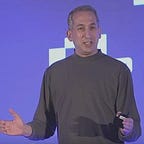What is Spatial Audio?
And why does it matter for Spatial Computing?
I recently read an article that promised to fully explain Spatial Audio. Well, I still have questions, and you may too. So let’s try to explain it from the perspective of a Spatial Computing Experience, whatever that is…
My career has been centered on real-time 3D graphics and what we’ll call Spatial Computing (link to definition). I’ve worked with some amazing audio engineers and designers, including Tom Hollman, who invented THX and other extraordinary things. In fact, some of the best technologists I know came from a career in high-end audio engineering, at the very least because (as they will likely tell you) audio is at least 50% of any rich media experience but often much less than 50% of the budget. It’s true.
So let’s try to translate this complex set of technology into something understandable to mere mortals with ears. We’ll start at the rich media experience itself and work our way backwards to tech.
In fact, let’s start with the case of reality:
Imagine we’re sitting together in a room, two of us on either side of a medium round table. When I speak, you’d expect my voice to seem like it’s coming from my mouth, and…
